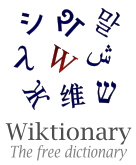A Mão Esquerda da Escuridão
Here's an old post from the blog archives of Geekery Today; it was written about 9 years ago, in 2016, on the World Wide Web.
So I don’t know if this is your thing, but if it is, you may have noticed that in all of the Iberian Romance languages, the most commonly used words for the left
— the direction left, or on the left-hand side — are obviously related to each other: Castilian Spanish izquierdo, Catalan esquerre, Galego/Portuguese esquerdo, etc. — are all obviously related to each other, but none of them seem to bear any particular relation to the usual Latin word for left,
which is sinister.[1] So then if they didn’t get it from granddaddy Latin, where’d they all get it? Well, the other day I learned that the answer is that when people give you directions on the Iberian peninsula, they’re all getting their word for left
from Basque. Neat.
- [1]Forms of that word still exist in the modern languages — it’s siniestro in Castilian Spanish, sestro in Portuguese, etc. — and they can strictly speaking still be used to mean
to the left
oron the left-hand side.
But their primary use is much more like Englishsinister,
to suggest something perverse, evil, unsettling or insidious; using them to indicate left as a direction or handedness would be to make a word choice with a certain connotation of archaism or exoticism, like usingsable
instead ofblack
to describe the color of my coffee table.↩

Reply to A Mão Esquerda da Escuridão Follow replies to this article · TrackBack URI
Follow replies to this article · TrackBack URI